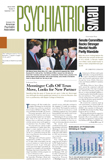“At this point we do not have a medication that can cure autism, so if a doctor tells you that there is one, get up and run away!” This was the advice that Luke Tsai, M.D., a professor of psychiatry and pediatrics at the University of Michigan Medical School and director of the school’s Developmental Disorders/Autism Program, gave those persons attending the national autism conference in San Diego in July.
Nonetheless, he reassured them, some psychotropic drugs can lessen some of the symptoms of autism—for example, the difficulty paying attention, ritualistic actions, or tics. The serotonin-reuptake inhibitors, he added, may also make autism patients a bit more sociable, although there are really no medications that can improve their social skills or help them with speech development.
For the approximately 30 percent of autism patients who experience seizures, anticonvulsants such as carbamazepine and valproic acid can help, reported Roberto Tuchman, M.D., a child neurologist and clinical assistant professor of neurology at the University of Miami School of Medicine. The reasons such medications help autism patients, he explained, may have to do not only with their ability to counter seizures, but with their ability to stabilize moods.
Some unconventional treatments might also benefit autism patients, various conference speakers indicated. One was Amy Holmes, M.D., a radiation oncologist from Baton Rouge, La.
Holmes related how for 15 years she and her husband, also a physician, had tried to have a child. And when one finally arrived in 1995, they were overjoyed. At first their son appeared to be healthy and happy. But as the months went by, he started to retreat into himself. “He treated my husband and me like pieces of furniture,” Holmes recalled, and as his grandmother started to notice, “He has become a most unloving child.” He would sit and focus on a leaf for hours at a time, she noted. In 1997 a pediatric neurologist diagnosed him as having severe autism.
Holmes and her husband gave him various types of medications as well as speech therapy, but those interventions did not help him. In fact, he continued to regress. So they started exploring some unconventional treatment routes and in the process learned that he had high levels of lead in his body. So they took steps to have it removed, and afterward his attention and language improved a little. They then determined that he had high levels of mercury in his body and acted to remove that as well.
After those procedures, Holmes said, his I.Q. improved, and he started catching up on months of language development. By December 2000, she said, his I.Q. had reached the normal range, and as of this summer, he no longer meets diagnostic criteria for autism. He can participate in conversation, play with other children, ride a bike, and roller blade. He will start first grade in the fall.
Holmes was so overwhelmed by the dramatic improvement in her son’s health that she decided to conduct an open pilot study to see whether mercury removal might also benefit other children with autism. Of the 152 children who participated, 54 (36 percent) experienced some improvement, she said. Holmes is planning to publish the pilot study’s results and also to conduct a double-blind, placebo-controlled trial to further explore and document the value of the technique against autism.
Not surprisingly, many physicians view such unconventional treatments with skepticism or downright hostility, said Paul Hardy, M.D., a neurologist and psychiatrist from Hingham, Mass. Even up to four years ago, he admitted, he thought that such treatments were bogus. However, he now believes that such treatments should be given a chance and that there may even be some value to them.
